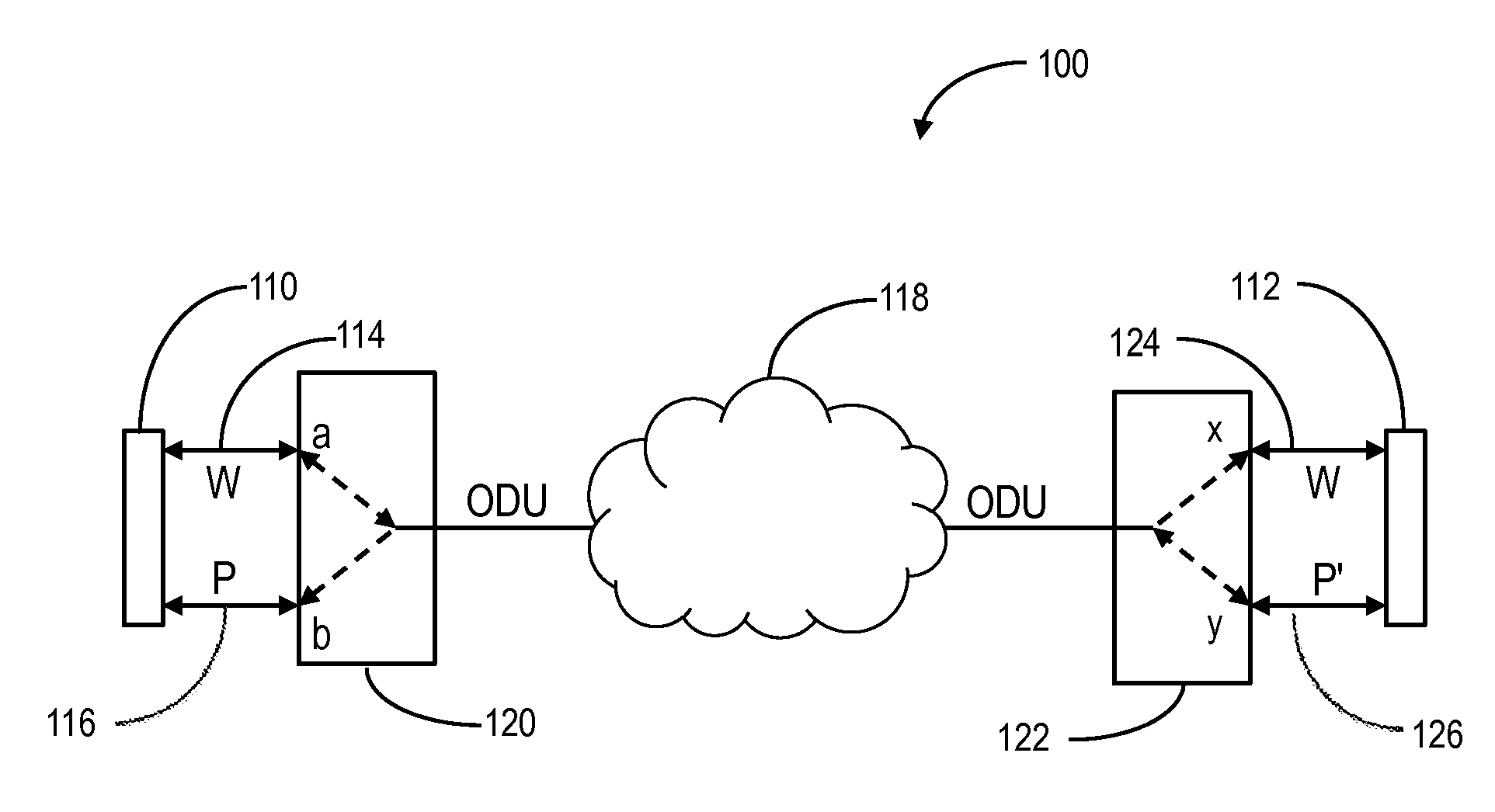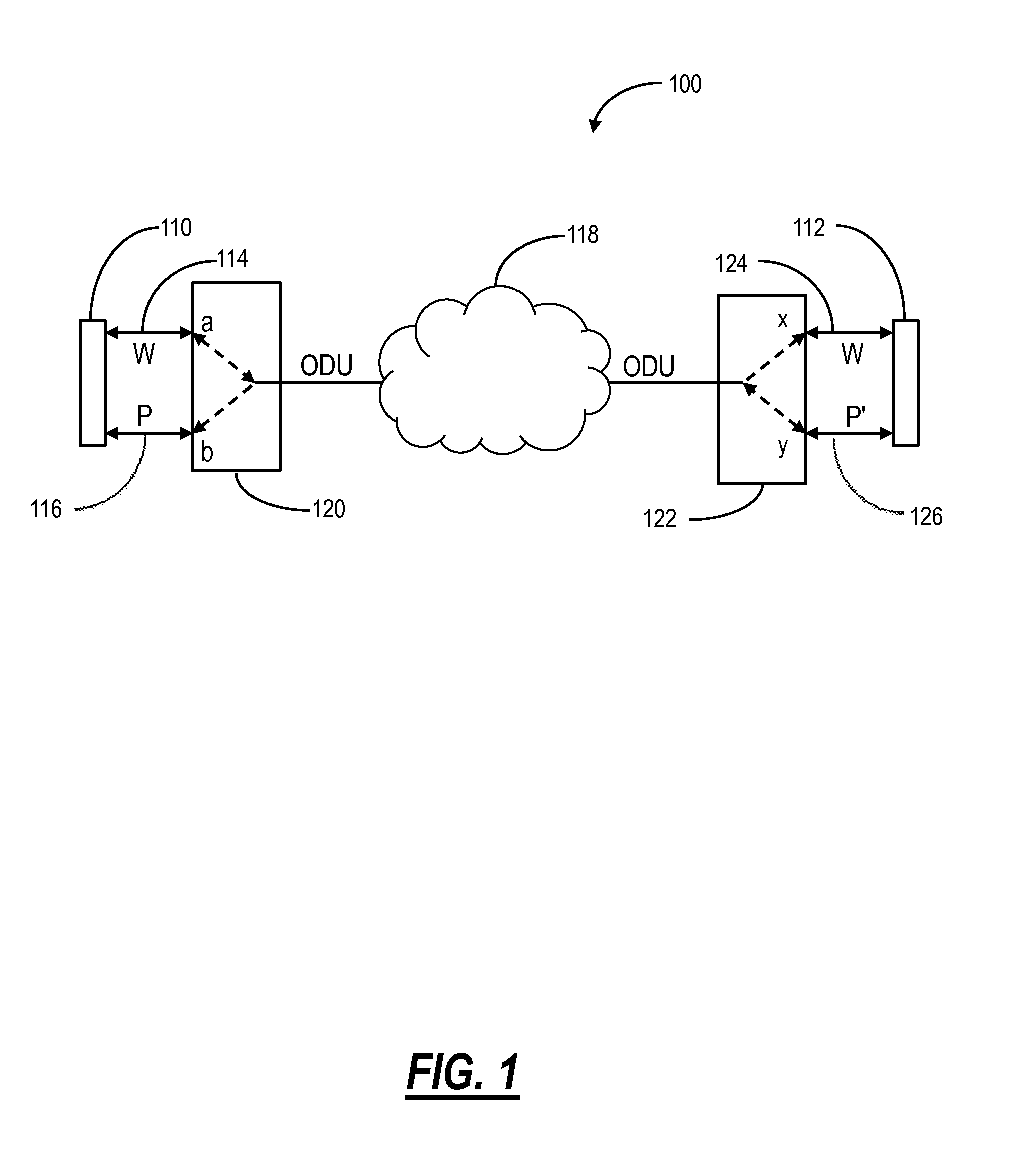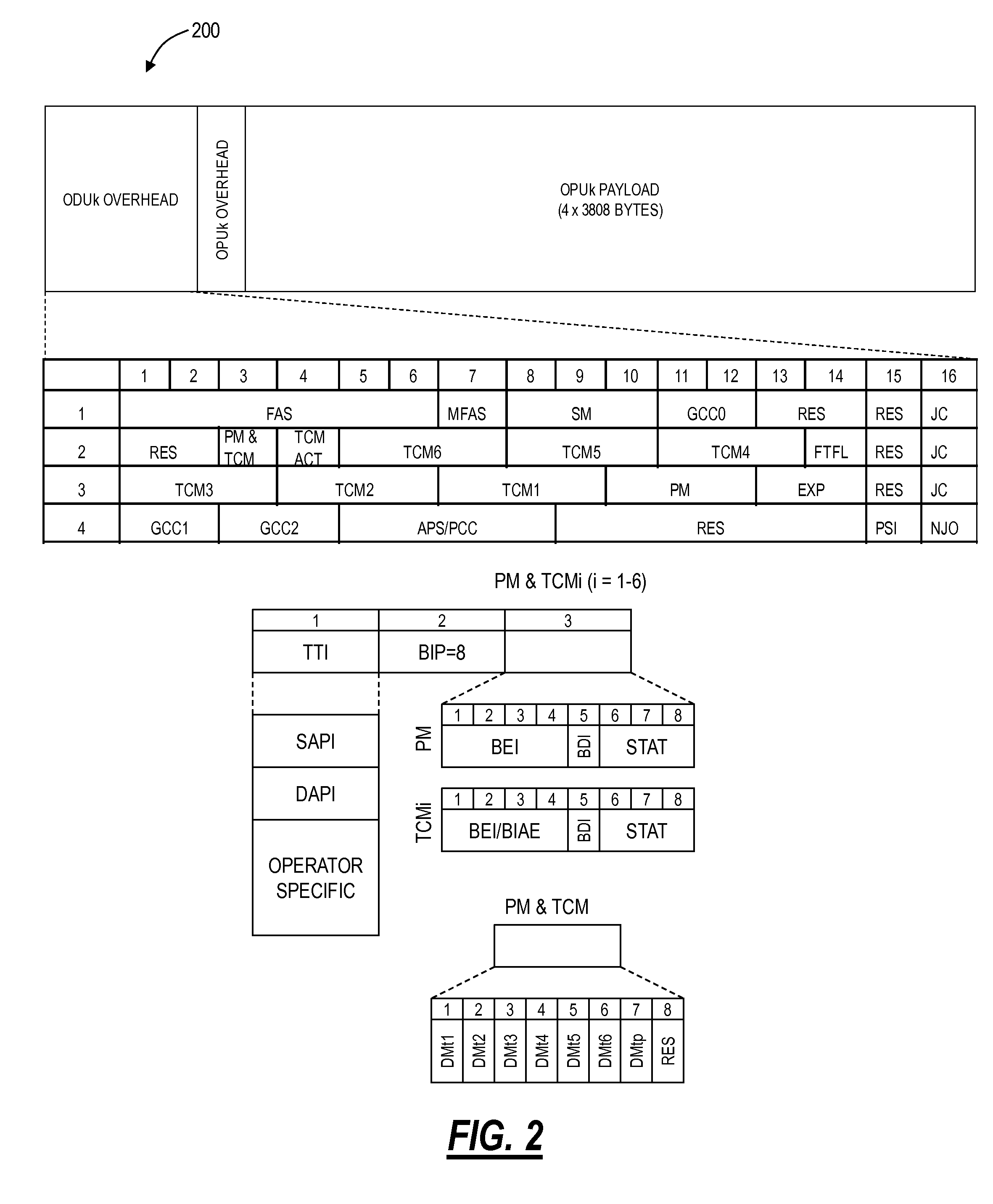Methods and systems of preserving client overhead bytes in optical transport network tunneling applications
- Summary
- Abstract
- Description
- Claims
- Application Information
AI Technical Summary
Benefits of technology
Problems solved by technology
Method used
Image
Examples
Embodiment Construction
[0024]In various exemplary embodiments, methods and systems of preserving client overhead bytes in OTN tunneling applications are described. The methods and systems enable 1+1 APSNLSR / BLSR / TLSR handoffs to clients while only requiring a single line in an OTN network. APS switching-coordination bytes from work and protect signals are transmitted across an OTN network in an overhead segment of an Optical channel Data Unit (ODU) frame. Either the work or protect signal is designated as the active signal and is encapsulated by the ODU frame. While other examples and advantages are within the scope of these descriptions, particular embodiments are directed toward work and protect signals compliant with one of SONET / SDH protocols. In an exemplary method, a work signal and a protect signal each including APS K-bytes are received, for example, at or from a node considered as a head end from a network client perspective. The active signal is encapsulated in an ODU frame that is transmitted i...
PUM
 Login to View More
Login to View More Abstract
Description
Claims
Application Information
 Login to View More
Login to View More - R&D
- Intellectual Property
- Life Sciences
- Materials
- Tech Scout
- Unparalleled Data Quality
- Higher Quality Content
- 60% Fewer Hallucinations
Browse by: Latest US Patents, China's latest patents, Technical Efficacy Thesaurus, Application Domain, Technology Topic, Popular Technical Reports.
© 2025 PatSnap. All rights reserved.Legal|Privacy policy|Modern Slavery Act Transparency Statement|Sitemap|About US| Contact US: help@patsnap.com



